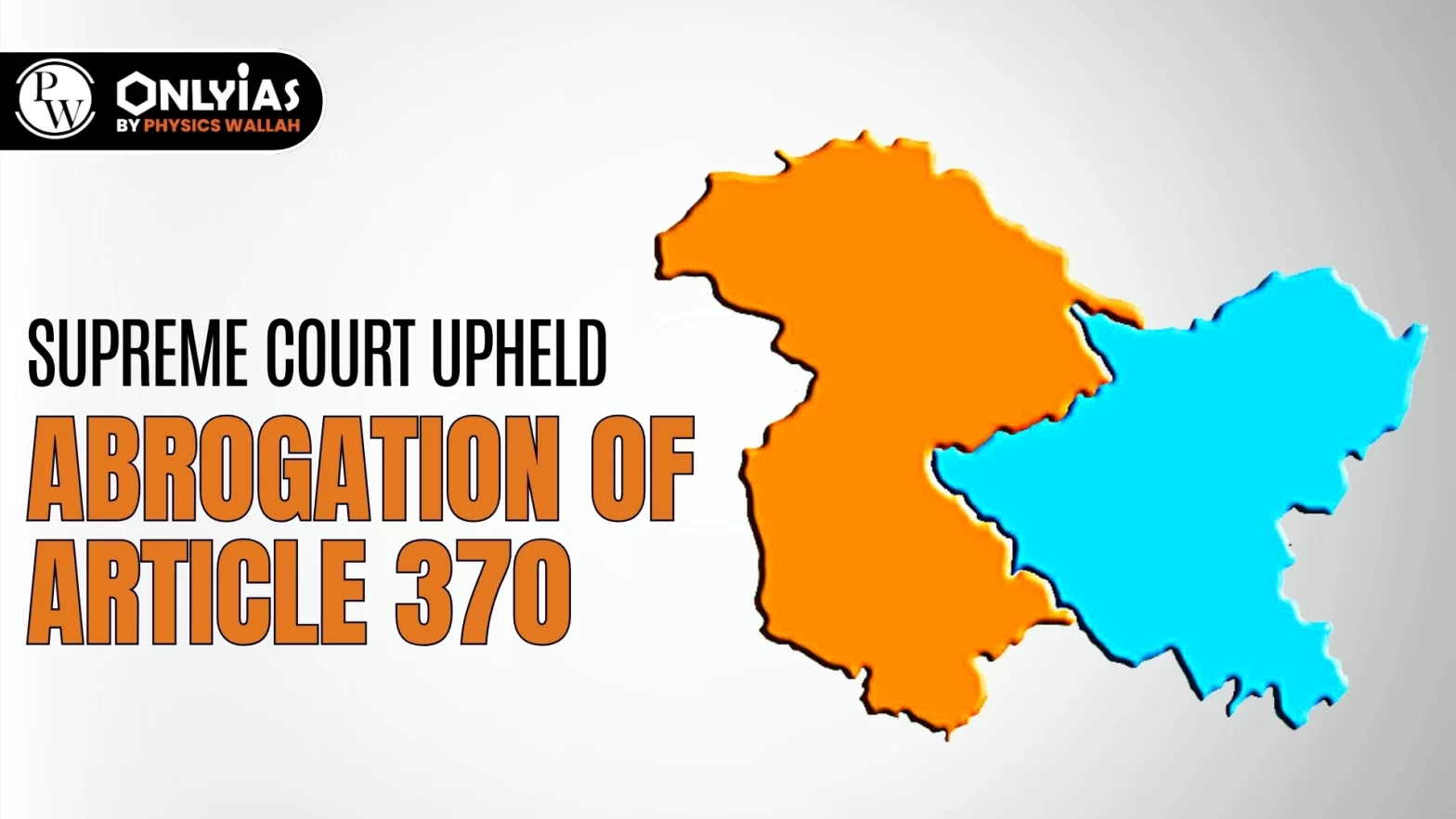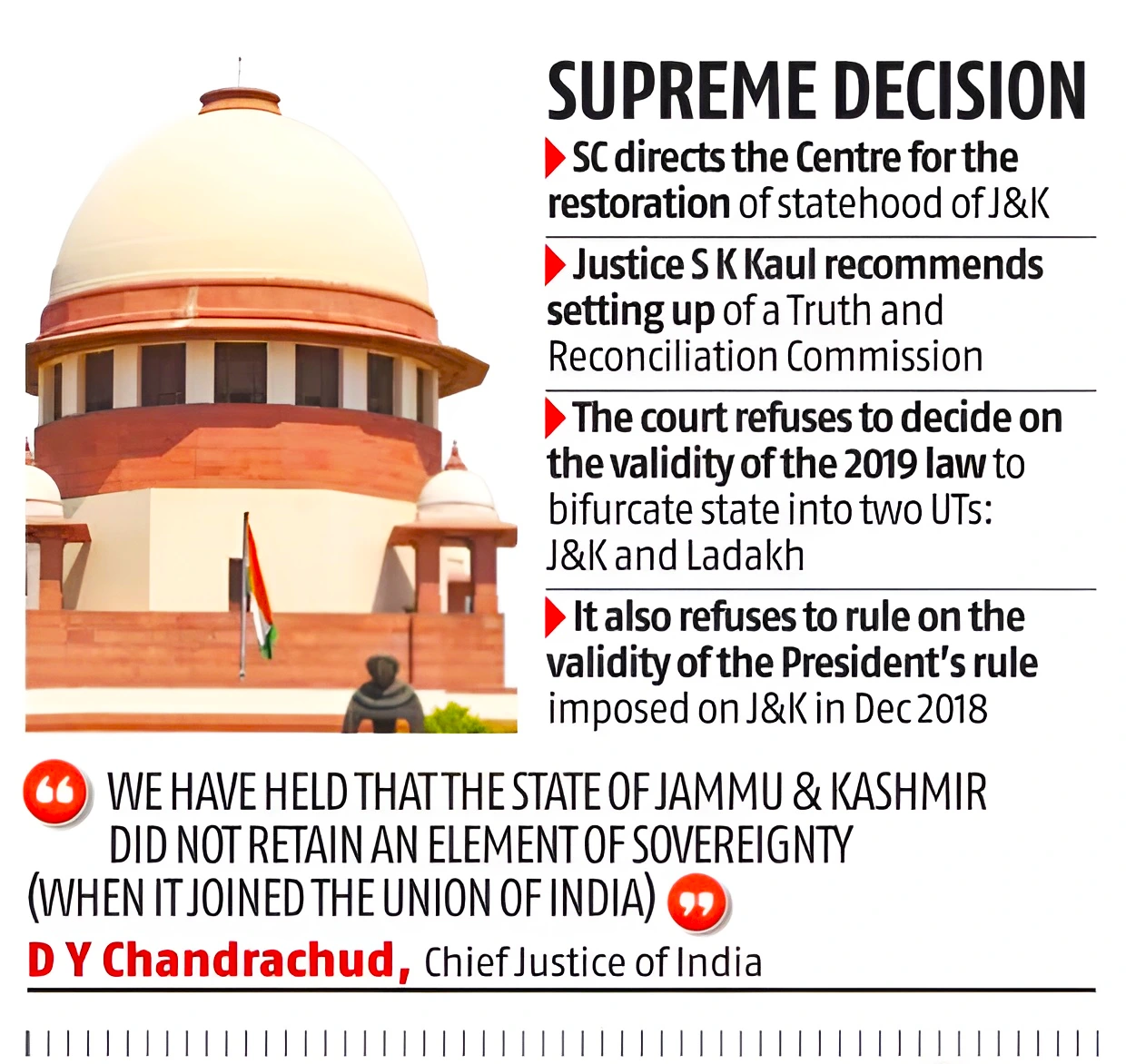
Context: The Supreme Court (SC) Constitution bench led by CJI pronounced its verdict on petitions challenging the abrogation of Article 370 and bifurcation of the erstwhile state of Jammu and Kashmir into two Union territories.
| Relevancy for Prelims: Supreme Court of India, Article 3, 370, 35A, and 367 of the Indian Constitution, and Presidential Orders CO (The Constitution (Application To Jammu and Kashmir) Orders 272 and 273.
Relevancy for Mains: Article 370 of the Indian Constitution, Its Historical Background, Timeline, Abrogation, and Recent Supreme Court Verdict on it. |
|---|

Article 370: Timeline
|
|---|
Differences between a Constituent Assembly and a Legislative Assembly
|
|---|
Article 1 of the Constitution of India: It provides that India is a Union of States.
Section 3 of the Constitution of Jammu and Kashmir: It declared that Jammu and Kashmir is an integral part of India.
|
|---|
To get PDF version, Please click on "Print PDF" button.

<div class="new-fform">
</div>